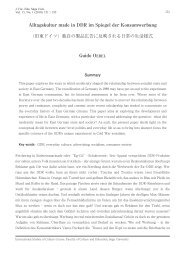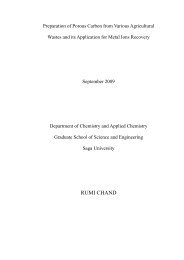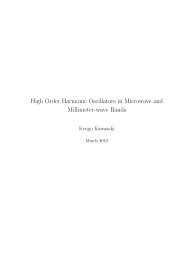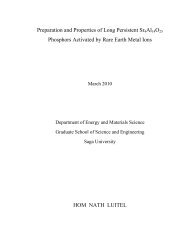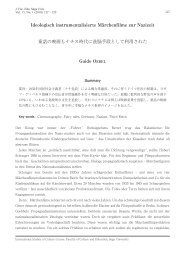ε (eV)
ε (eV)
ε (eV)
Create successful ePaper yourself
Turn your PDF publications into a flip-book with our unique Google optimized e-Paper software.
Definition 3 Disinfection is the process of inactivation of a fraction of the total<br />
microorganisms existing on the treated object.<br />
If the desired effect is the total disinfection of an object, then the process will<br />
be called sterilization [7, 8, 10]. Under these terms, the sterilization can be defined<br />
under two different aspects: a theoretical, as well as a practical (operational) one.<br />
Definition 4 (Theoretical) Sterilization is the process of inactivation of all the<br />
microorganisms existent on the treated object.<br />
In practice, the assessment of the effectiveness of an inactivation experiment<br />
is realized by counting the surviving microorganisms [10-12]. This experimental<br />
procedure makes use of the following operational definitions:<br />
Definition 5 Disinfection is the process at the end of which the number of<br />
surviving microorganisms is at least one.<br />
Definition 6 Sterilization is the process at the end of which the number of<br />
surviving microorganisms is less than one.<br />
These definitions are also illustrated by the schematically representation from<br />
the Fig. 1.1.<br />
Usually, the standard number of microorganisms infecting an object is chosen<br />
to be 10 6 [13-18]. Then, in accord with the above definitions, at the end of<br />
the experiment, the treated object (surface) is said to be "sterilized" if the final<br />
3



